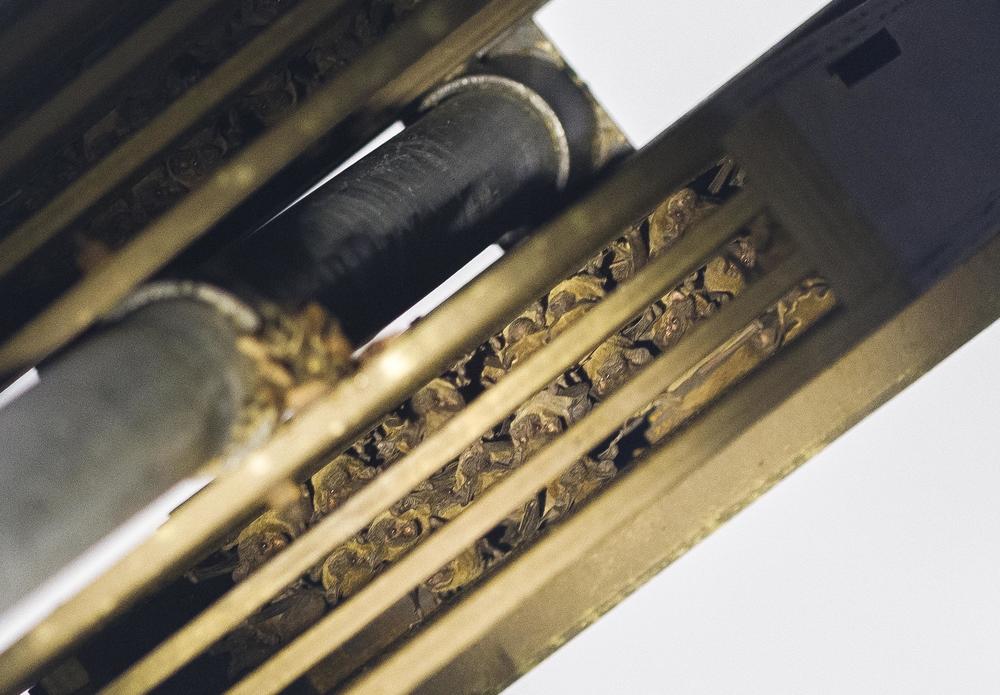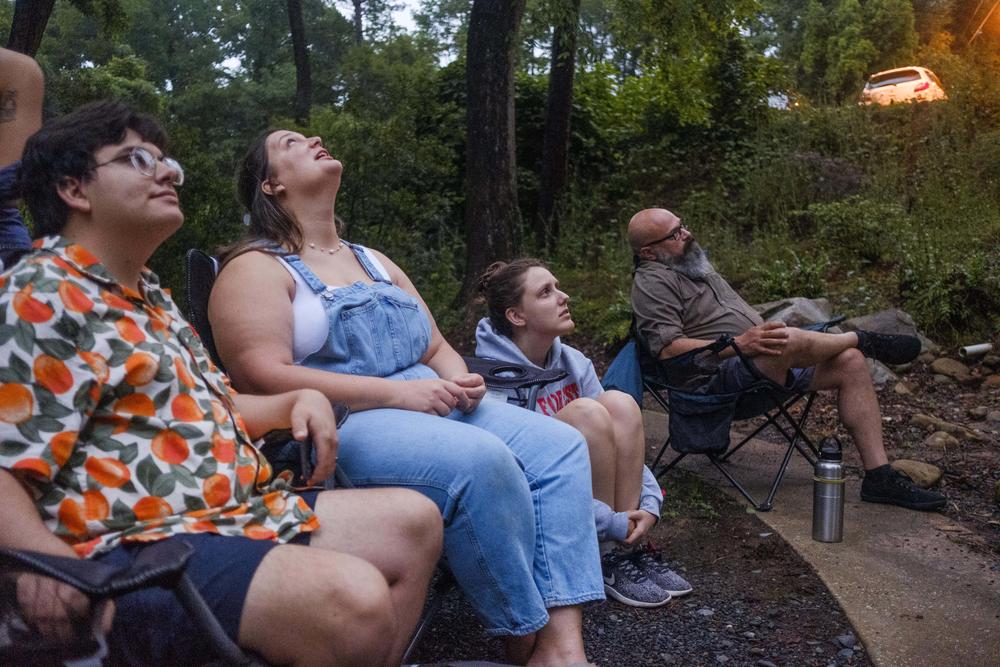
Caption
Mexican free-tailed bats huddle inside a bat box in Macon. Volunteers counted about 150 bats emerging from the box later — 100,000 times fewer than the size of a colony under one bridge in Austin, Texas.
Credit: Grant Blankenship / GPB News



